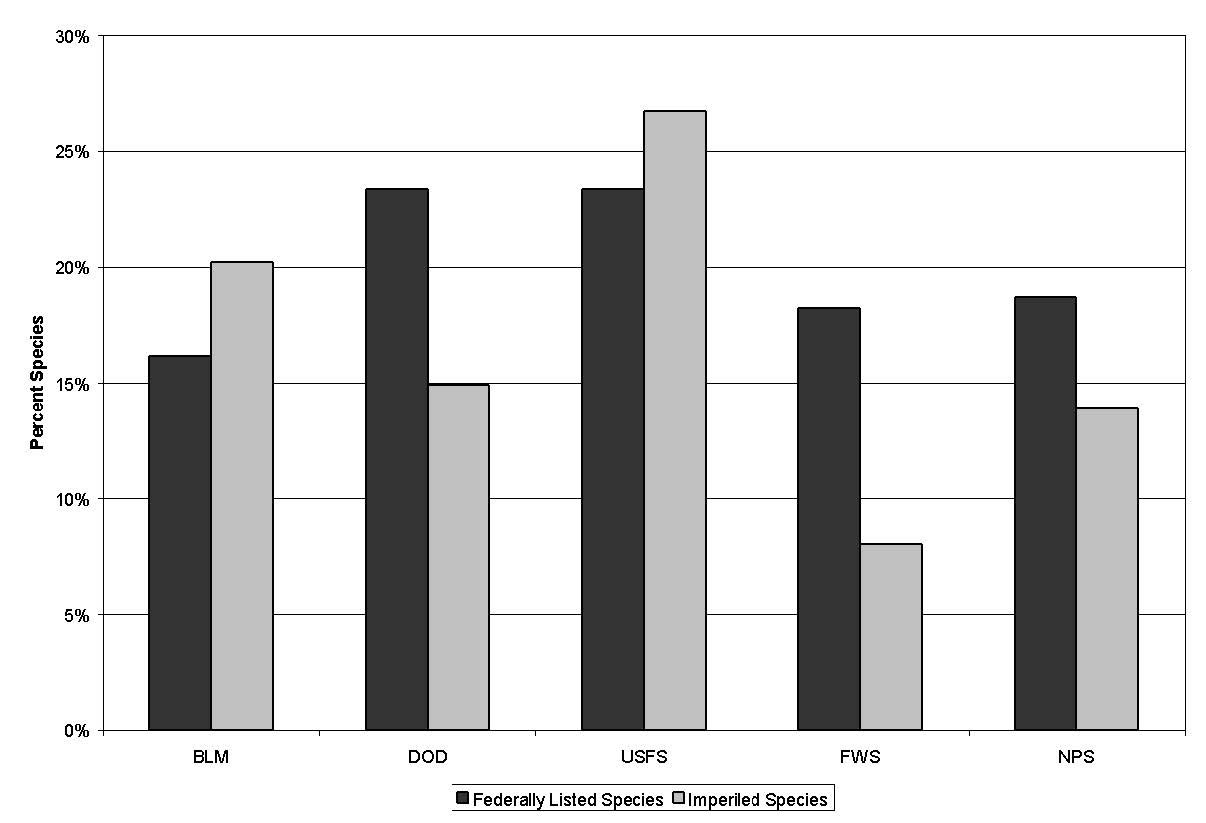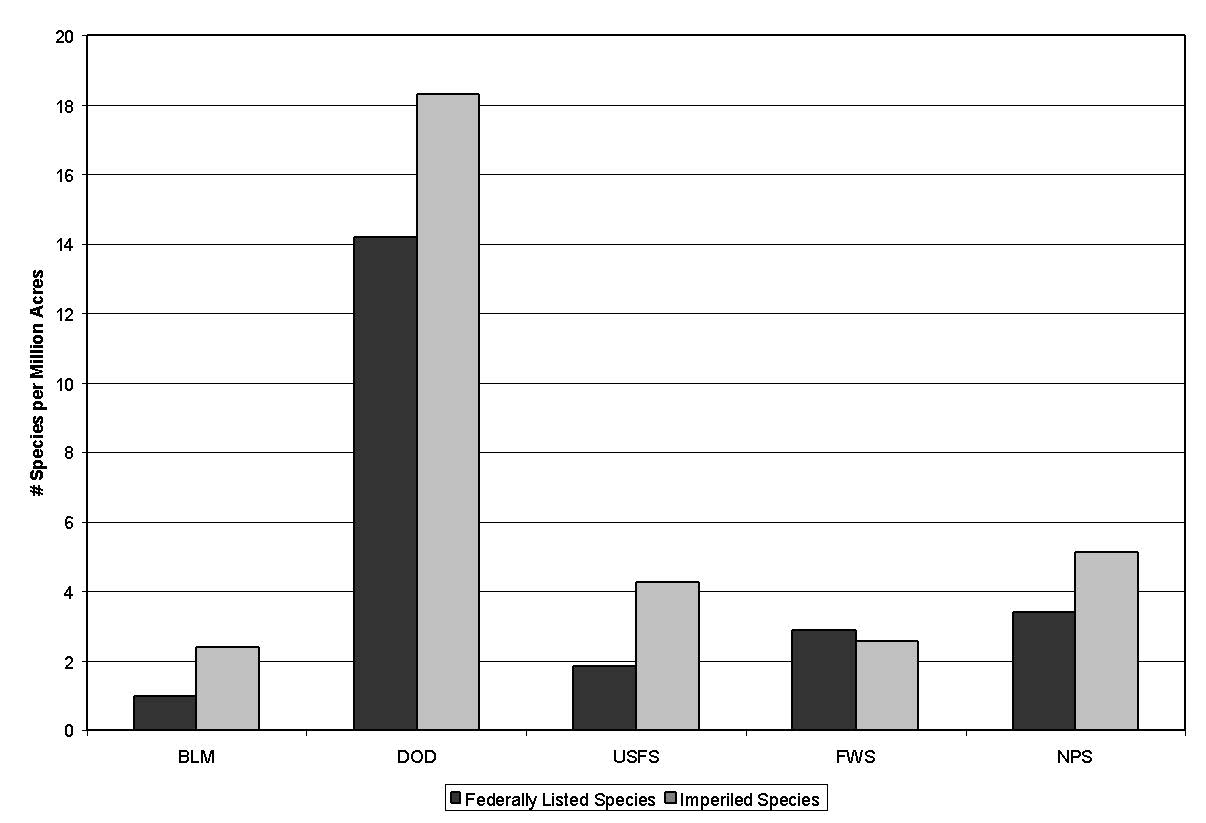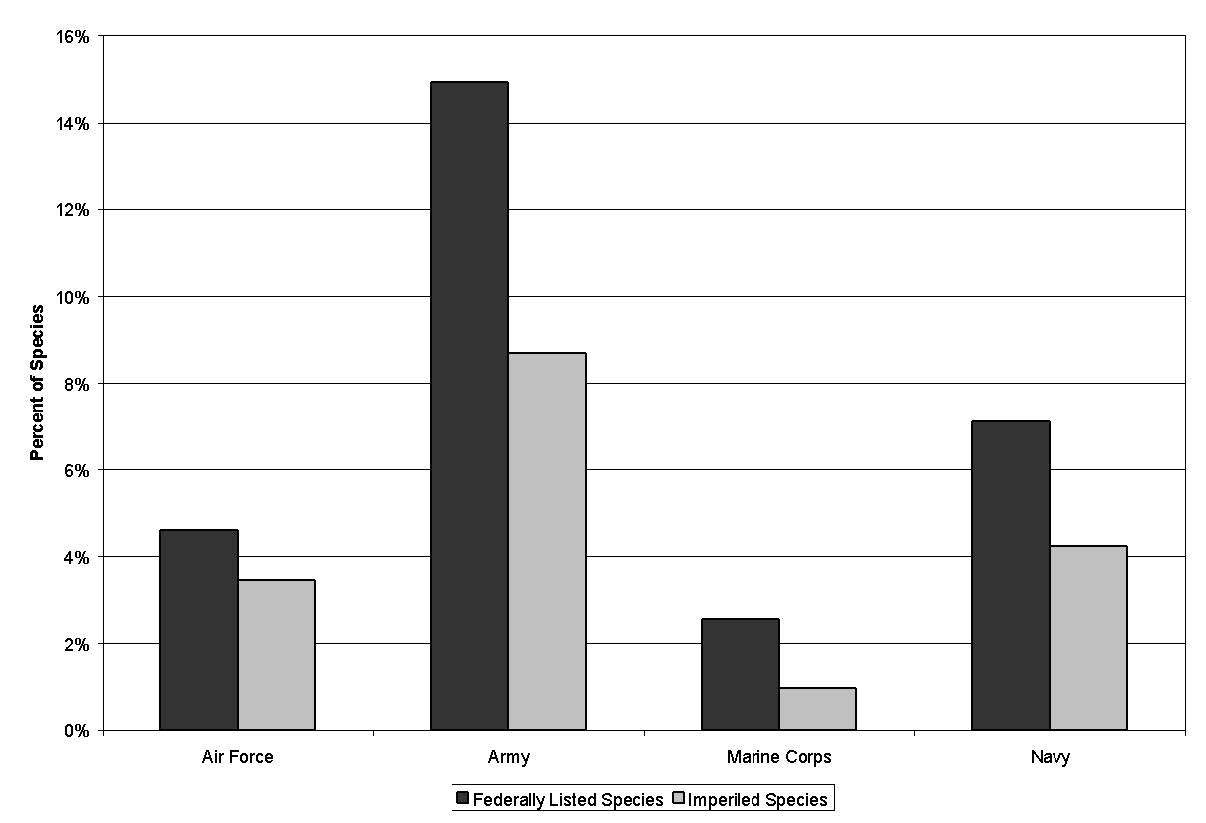As of 2020, there were 487 federally listed threatened and endangered species reported to occur on DoD lands (DoD 2020a). One way to put the role of military lands for maintaining biodiversity into context is to compare the number of endangered or at-risk species found on defense lands with those of other federal agencies. Several studies have documented particularly high levels of endangered species on DoD lands relative to other federal agencies (Flather et al. 1994, Groves et al. 2000, Stein et al. 2008). Based on the most recent such analysis (Stein et al. 2008), the 25 million acres of DoD lands harbor about the same number of federally listed species as the 193 million acres of lands managed by the U.S. Forest Service (Figure 1.6). The significance of military lands for biodiversity is therefore particularly striking when viewed from the perspective of the density of listed species per million acres (Figure 1.7). Federally listed species are only a portion of the total number of plants and animals that are at increased risk of extinction and of conservation concern. Considering instead the number of NatureServe-defined critically imperiled (G1) and imperiled (G2) species, in 2008 military lands were recorded as having about 460 such species, ranking third in number of imperiled species behind the Forest Service and the Bureau of Land Management (BLM). Looking across the military services (Figure 1.8), Army bases were recorded as having the largest number of both listed and imperiled species.
Installations and Ranges with Threatened and Endangered Species

Figure 1.7. Endangered and imperiled species on federal agency lands. Lands of the DoD and U.S. Forest Service harbor the greatest number of species with formal status under the Endangered Species Act (Adapted from Stein et al. 2008).

Figure 1.8. Density of endangered and imperiled species on federal lands. Military lands have the greatest density of both ESA status species and imperiled species of any federal land management agency (Adapted from Stein et al. 2008).

Figure 1.9. Endangered and imperiled species by military service. Army lands support the largest number of both ESA status and imperiled species (Adapted from Stein et al. 2008).
The top ten military installations for federally listed species reflect the overall patterns of biodiversity described earlier, with bases in Hawai`i, California, and Florida well represented (Table 1.3). Four of the top five bases are in Hawai`i— Schofield Barracks Military Reservation, Makua Military Reservation, Joint Base Pearl Harbor-Hickam, and Kawailoa Training Area—highlighting the extreme levels of endemism and risk associated with the native Hawaiian biota. Indeed, the military’s Hawaiian holdings clearly are a major factor in defining the overall number of listed species on DoD lands. The DoD has more discrete land holdings in Hawai`i than any other federal agency, and although many are fairly small, as a whole they touch upon a wide variety of biologically distinctive zones, each of which has its own distinct assemblage of rare species, including many rare and endangered plants.
Table 1.3. Top ten military installations for federally listed species
The top installations for federally listed species illustrate the biological significance of bases in Hawai’i, Guam, Florida, and California. Number of species are based on installation self-reporting as of FY2019 (DoD 2020a).
| Service | Installation | # Species |
|---|---|---|
| Army | Schofield Barracks Military Reservation, HI | 58 |
| Army | Makua Military Reservation, HI | 46 |
| Navy | Joint Base Pearl Harbor-Hickam, HI | 41 |
| Army | Kawailoa Training Area, HI | 33 |
| Navy | Joint Base Marianas, Guam | 32 |
| Army | Pohakuloa Training Area, HI | 26 |
| USAF | Homestead Air Reserve Base, FL | 25 |
| USAF | Vandenberg Air Force Base, CA | 23 |
| USAF | Cape Canaveral Air Force Station, FL | 21 |
| USMC | Marine Corps Base Camp Pendleton, CA | 18 |
Next Page: Species at Risk on DoD Lands
Author
Bruce Stein, Ph.D., Chief Scientist and Associate Vice President
National Wildlife Federation
Biodiversity on Military Lands Sections
Biodiversity on Military Lands
